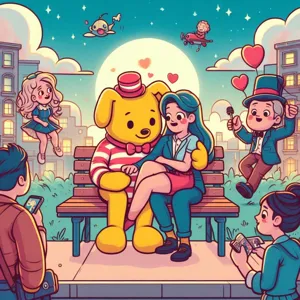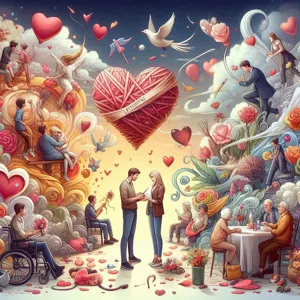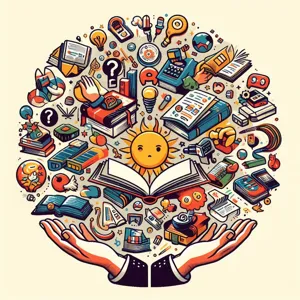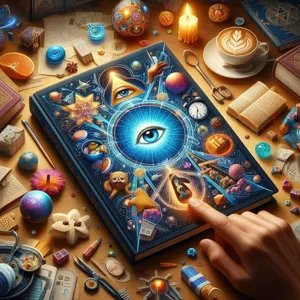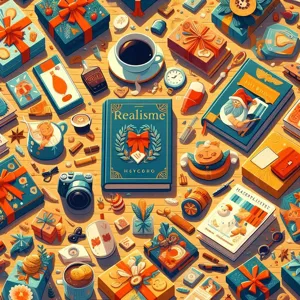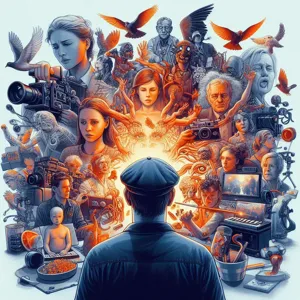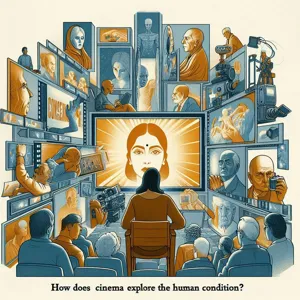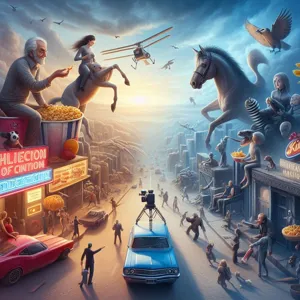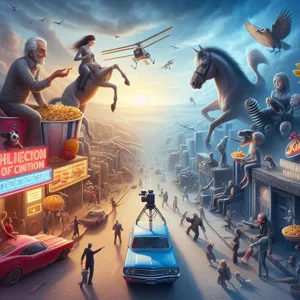Books have an unparalleled ability to transport us into the intricate tapestry of human relationships, allowing us to experience the complexities of love, friendship, betrayal, and redemption through the eyes of diverse characters.
In a world where connections can often feel fleeting or superficial, literature serves as a powerful reminder of the profound depths of our interactions. Whether it’s the heart-wrenching tale of a long-lost friendship, the passionate exploration of romantic entanglements, or the bittersweet dynamics of family ties, the right book can illuminate the nuances of our own relationships and offer fresh perspectives on the human experience. In this post, we will embark on a literary journey, uncovering captivating titles that delve into the intricacies of human connections, showcasing how these narratives resonate with our lives and inspire deeper understanding and empathy. Join us as we unlock the pages of these remarkable stories, exploring the vibrant spectrum of sentiments that define our very existence.
1. Introduction: The Importance of Human Relationships in Literature

In a world that often feels increasingly fragmented, the exploration of human relationships remains a cornerstone of literature. From the tender bonds of friendship to the tumultuous dynamics of love and betrayal, books have a unique ability to delve into the complexities of our connections with one another. Through the written word, authors can capture the nuances of these relationships, offering readers a mirror through which they can reflect on their own lives.
Literature serves as a profound exploration of the human experience, inviting us to examine the joys and sorrows that accompany our interactions. It allows us to navigate the rich tapestry of emotions that define our relationships—trust, loyalty, heartache, and redemption. Whether it’s the deep-seated ties between family members, the exhilarating highs and lows of romantic love, or the quiet understanding found in friendships, literature paints a vivid portrait of how we relate to those around us.
Moreover, books have the power to foster empathy, providing insights into lives and experiences different from our own. They challenge us to step into the shoes of diverse characters, facilitating a deeper understanding of the motivations, fears, and desires that drive human behavior. In this way, literature not only entertains but also enlightens, prompting readers to contemplate their own relationships and the broader human condition.
As we embark on this journey through the pages of literary works that explore human connections, we will uncover stories that resonate with our own experiences and remind us of the profound impact relationships have on our lives. Join us as we unlock the pages and delve into the depths of human relationships in literature, discovering the timeless themes that bind us all together.
2. Defining the Depths of Human Relationships
In exploring the depths of human relationships, it becomes essential to first define what we mean by “depth.” Human relationships can range from superficial acquaintances to the profound bonds shared between family, friends, and romantic partners. The depth of a relationship often correlates with emotional intimacy, mutual understanding, and the ability to navigate conflicts together.
Books that delve into these complexities capture the nuances of connection, illustrating how trust, vulnerability, and empathy play pivotal roles in shaping our interactions. They reveal the layers of human experience—joy and sorrow, love and loss, growth and stagnation.
For instance, consider novels that portray the intricacies of friendships that stand the test of time, or tales of families torn apart by secrets yet bound by love. These narratives allow readers to reflect on their own relationships and question what truly defines a deep connection.
Moreover, the exploration of human relationships in literature often takes on various cultural and societal contexts, shedding light on how external factors influence interpersonal dynamics. By examining these themes, readers gain insight into their own lives, prompting introspection and a deeper understanding of the ties that bind us.
As we embark on this literary journey, we will uncover stories that resonate with our own experiences, challenging us to consider not just how we relate to others but also how we can cultivate deeper, more meaningful connections in our lives.
3. Classic Novels That Delve Into Relationship Dynamics

Classic novels have an unparalleled ability to capture the intricacies of human relationships, offering readers profound insights into the emotional landscapes that shape our connections with others. These timeless works often explore themes of love, betrayal, friendship, and familial bonds, revealing the complexities and nuances that define our interactions.
Take Jane Austen’s *Pride and Prejudice*, for instance. Through the spirited exchanges between Elizabeth Bennet and Mr. Darcy, Austen deftly illustrates the dance of social class and personal prejudice that often complicates romantic pursuits. Their evolving relationship serves as a powerful commentary on misunderstandings and the transformative power of love, making it a quintessential exploration of relationship dynamics.
Similarly, F. Scott Fitzgerald’s *The Great Gatsby* takes readers on a journey through the roaring twenties, exploring the depths of desire and disillusionment. The relationships between Gatsby, Daisy, and Tom reveal the fragility of human connections and the lengths to which individuals will go to attain their dreams—often at a great personal cost. Fitzgerald’s poignant prose invites readers to reflect on the illusion of love and the stark realities that often lurk beneath the surface.
Another classic worth noting is Leo Tolstoy’s *Anna Karenina*, a masterful exploration of forbidden love and societal expectations. Tolstoy intricately weaves the lives of Anna and her lovers, highlighting the emotional turmoil and moral dilemmas faced by individuals as they navigate the constraints of society. The novel’s rich character development and psychological depth provide readers with a profound understanding of the sacrifices made for love and the inevitable consequences that follow.
These classics, along with many others, not only entertain but also provoke thought and discussion about the various dimensions of human relationships. By immersing ourselves in these stories, we gain valuable perspectives that can help us navigate our own connections, making these literary treasures essential reads for anyone looking to deepen their understanding of the human experience.
4. Contemporary Fiction: Modern Takes on Human Connections
Contemporary fiction serves as a vibrant tapestry that reflects the complexities and nuances of human relationships in today’s fast-paced world. With its diverse range of voices and experiences, this genre offers readers a fresh lens through which to explore connections that shape our lives. From the intricacies of romantic entanglements to the profound bonds of friendship and family dynamics, contemporary fiction delves into the heart of what it means to relate to one another in an ever-evolving societal landscape.
Take, for instance, the works of authors like Celeste Ng and her poignant narratives that unravel the threads of family secrets and cultural identity. In novels like “Little Fires Everywhere,” Ng masterfully paints the delicate interplay between motherhood and ambition, shedding light on the often unspoken struggles of women navigating their roles within familial structures. Similarly, the sharp wit of Sally Rooney in “Normal People” captures the ebb and flow of intimacy between two individuals as they navigate love, class, and personal growth, encapsulating the essence of connection in the modern age.
Moreover, contemporary fiction isn’t confined to just romantic relationships; it also explores the depths of friendship, such as in the heartwarming yet heartbreaking stories penned by authors like Ann Patchett. Her novel “Commonwealth” weaves together the lives of two families over decades, illustrating how bonds can be forged and fractured, leaving a lasting impact on all involved.
In contemporary fiction, the settings are as varied as the characters, ranging from bustling urban landscapes to quiet suburban homes, each serving as a backdrop that enhances the emotional weight of the relationships portrayed. The genre often tackles pressing social issues—such as mental health, race, and gender dynamics—providing context and depth to the characters’ interactions and the choices they make.
As you immerse yourself in the pages of contemporary fiction, you’ll find that these modern tales resonate deeply, inviting you to reflect on your own relationships and the myriad ways in which we connect, misunderstand, and ultimately grow with one another. Whether through the lens of humor, heartache, or resilience, contemporary fiction remains a powerful vehicle for exploring the intricate web of human relationships in a world that is constantly changing.
5. Memoirs and Biographies: Real-Life Stories of Relationships

Memoirs and biographies serve as powerful windows into the intricate tapestry of human relationships, offering readers a glimpse into the authentic emotions, challenges, and triumphs that define our connections with one another. The beauty of these real-life narratives lies in their ability to resonate deeply with us, as they capture the essence of love, friendship, family dynamics, and even the complexities of rivalry and heartbreak.
Consider the memoir of a beloved public figure, where the author reflects on their personal relationships—be it a poignant account of a mother’s unwavering support, the intoxicating highs and lows of romantic love, or the bittersweet realities of estrangement. These stories often evoke empathy and understanding, affirming that the joys and sorrows we experience in our own lives are shared by others.
Biographies, on the other hand, provide a broader context, illustrating how individual relationships shaped the lives of historical figures. Imagine delving into the life of a revolutionary leader whose partnerships and alliances influenced monumental changes in society. These narratives not only reveal the personal struggles of the subject but also shed light on the interconnectedness of relationships in driving societal progress.
Whether you’re seeking inspiration, comfort, or a deeper understanding of the human experience, memoirs and biographies are treasure troves of wisdom. They encourage us to reflect on our own relationships, prompting us to cherish the bonds we hold dear or to navigate the complexities of the ones that challenge us. As you explore these real-life stories, you’ll find that the pages are not just filled with words, but with the echoes of laughter, tears, and the profound lessons that come from living in relation to one another.
6. The Role of Cultural Context in Shaping Relationships in Literature
The role of cultural context in shaping relationships in literature is profound and multifaceted. Each story is not only a reflection of personal experiences but also a mirror that captures the intricate tapestry of societal norms, traditions, and values that influence human interactions. When exploring the depths of human relationships through literary works, understanding the cultural backdrop becomes essential to fully appreciate the characters’ motivations, conflicts, and emotional journeys.
Take, for example, the rich narratives found in works from different parts of the world—such as the passionate love stories of Latin American literature, where cultural expressions of love can clash with societal expectations, or the quiet, restrained relationships depicted in Japanese literature, where unspoken emotions often speak louder than words. In each case, the unique cultural context shapes the way characters relate to one another, revealing how deeply embedded customs and societal pressures can affect love, friendship, and familial bonds.
Additionally, literature often explores how cultural shifts, such as globalization or migration, impact relationships. Characters navigating the complexities of identity and belonging in a rapidly changing world can offer readers poignant insights into the ways cultural context can redefine interpersonal connections.
As you delve into these narratives, consider how the authors weave cultural elements into the fabric of their stories. What role does tradition play in the relationships portrayed? How do societal expectations influence the characters’ choices? By examining these aspects, you not only enhance your understanding of the characters but also gain a broader perspective on the universal themes of love, conflict, and connection that resonate across cultures. In doing so, you unlock a deeper appreciation for the intricate dynamics of human relationships as they unfold on the pages of literature.
7. Exploring Different Types of Relationships: Family, Friendship, and Romance

When it comes to the intricate tapestry of human interactions, relationships can take on countless forms, each with its own unique dynamics and emotional landscapes. In the realm of literature, exploring these diverse types of relationships—family, friendship, and romance—offers readers profound insights into the complexities of human connections.
Family relationships are often the cornerstone of our understanding of love, loyalty, and conflict. Books that delve into familial ties reveal the myriad ways in which family shapes our identities. Whether it’s the unconditional love between parents and children, the rivalry among siblings, or the burdens of generational expectations, these narratives provide a lens through which we can examine our own familial experiences. Titles like “The Glass Castle” by Jeannette Walls or “Little Fires Everywhere” by Celeste Ng showcase the intricate dynamics that can exist within a family, illuminating both the joys and the heartaches that come with these profound bonds.
Friendship, on the other hand, introduces us to the notion of chosen connections. Through stories of camaraderie, readers can explore themes of loyalty, betrayal, and the transformative power of friends. Books like “A Man Called Ove” by Fredrik Backman and “The Secret Life of Bees” by Sue Monk Kidd highlight the importance of friendship in navigating life’s challenges and celebrate the supportive networks that can uplift us in times of need. These narratives remind us that friendships can provide solace, laughter, and resilience, often shaping our journeys in ways we never expected.
Romantic relationships, perhaps the most celebrated yet complicated of all, reveal the multifaceted nature of love. Literature offers a rich canvas for examining the highs and lows of romantic connections, from the exhilarating rush of new love to the profound depths of heartbreak. Novels like “Pride and Prejudice” by Jane Austen and “The Fault in Our Stars” by John Green capture the essence of romantic relationships, exploring themes of passion, sacrifice, and the quest for understanding one another. These stories resonate with readers, as they mirror our own desires, fears, and the sometimes messy reality of love.
By immersing ourselves in these varied representations of relationships, we gain a deeper understanding of our own connections. Each type—family, friendship, or romance—adds layers to our emotional intelligence, allowing us to reflect on how we relate to others and navigate the delicate balance of human interaction. These literary explorations not only entertain but also encourage empathy, self-reflection, and a richer appreciation for the diverse ways we connect with one another.
8. Authors Who Masterfully Capture the Complexity of Relationships
When it comes to delving into the intricate tapestry of human relationships, some authors stand out as true masters. Their ability to weave together compelling narratives that explore the nuances of love, friendship, family dynamics, and the myriad conflicts that arise in between is unparalleled. These writers possess a unique gift for portraying the raw emotions and subtle intricacies that define our connections with one another.
One such author is **Chimamanda Ngozi Adichie**, whose novels like *Half of a Yellow Sun* and *Americanah* explore the complexities of identity, race, and the impact of history on personal relationships. Adichie’s characters are richly developed, their struggles and triumphs resonating deeply with readers as they navigate love, loyalty, and cultural dislocation.
Another luminary in this realm is **Jonathan Franzen**. With works such as *The Corrections* and *Freedom*, Franzen offers a piercing look at modern family life, revealing the discontent and dysfunction that often lurk beneath the surface. His keen observations and sharp wit unravel the tangled threads of familial bonds, illustrating how love can coexist with resentment, and how the pursuit of individual desires can fracture even the closest of ties.
**Anne Tyler** is yet another author who deftly captures the complexities of human relationships through her poignant storytelling. Novels like *The Accidental Tourist* and *A Spool of Blue Thread* illustrate the everyday dynamics of family life, portraying characters who grapple with their past and present while desperately seeking connection and understanding in a world that can often feel isolating.
Lastly, **Elizabeth Strout** has a remarkable ability to illuminate the depths of human emotion in her interconnected stories, particularly in *Olive Kitteridge* and *My Name Is Lucy Barton*. Strout’s writing reveals the profound impact of seemingly mundane interactions, showcasing how small moments can carry significant weight in shaping our relationships and our sense of self.
These authors not only entertain but also provoke thought, encouraging readers to reflect on their own relationships and the intricate dance of human connection. By immersing yourself in their works, you’ll find yourself navigating the rich landscape of love, loss, and everything in between, unlocking valuable insights into the depths of human relationships.
9. The Impact of Relationships on Character Development
In the vast tapestry of literature, the impact of relationships on character development serves as a pivotal thread that weaves together the experiences, motivations, and transformations of individuals. Relationships—be they familial, romantic, platonic, or adversarial—shape characters in profound ways, influencing their decisions and guiding their journeys through the narrative landscape.
Take, for example, the tumultuous relationship between Elizabeth Bennet and Mr. Darcy in Jane Austen’s “Pride and Prejudice.” Their initial misunderstandings and eventual evolution not only highlight personal growth but also serve as a mirror reflecting societal norms and individual prejudices of the time. As their relationship deepens, we witness Elizabeth’s shifting perceptions and Darcy’s gradual unraveling of pride, emphasizing how interactions with one another can lead to significant character development and self-discovery.
Similarly, in Khaled Hosseini’s “The Kite Runner,” the bond between Amir and Hassan illustrates the complexities of friendship layered with guilt, loyalty, and betrayal. Their relationship acts as a catalyst for Amir’s transformation, pushing him to confront his past and seek redemption. Through the lens of their friendship, readers explore themes of forgiveness and the enduring impact of unresolved relationships, illuminating the nuances of human connection and its power to shape one’s identity.
In these narratives, authors skillfully demonstrate that relationships are not merely backdrops for action but central to the characters’ arcs. They challenge, comfort, and inspire, compelling characters to confront their vulnerabilities and evolve in ways that resonate deeply with readers. As we dive into these stories, we find ourselves not only invested in the characters’ outcomes but also reflecting on the relationships in our own lives and their role in our personal growth. Through these explorations, literature offers a profound understanding of the intricate dance between relationships and character development, inviting us to unlock the pages and delve into the depths of human experience.
10. Book Recommendations for Exploring Human Relationships
When it comes to delving into the intricate tapestry of human relationships, literature serves as a powerful lens through which we can examine our connections, struggles, and triumphs. Here are some compelling book recommendations that beautifully explore the depths of human relationships, each offering unique insights and experiences.
1. **”The Great Gatsby” by F. Scott Fitzgerald** – This classic novel is not just a tale of unrequited love; it also poignantly captures the excesses of the Roaring Twenties and the elusive nature of the American Dream. Through the lens of Jay Gatsby’s obsessive love for Daisy Buchanan, readers are invited to reflect on the complexities of desire, social class, and the inherent loneliness that can accompany wealth and ambition.
2. **”Pride and Prejudice” by Jane Austen** – A timeless exploration of love, family dynamics, and societal expectations, Austen’s beloved novel offers sharp commentary on the nature of relationships in 19th-century England. The evolving relationship between Elizabeth Bennet and Mr. Darcy showcases the importance of understanding, respect, and personal growth in fostering meaningful connections.
3. **”The Fault in Our Stars” by John Green** – This poignant young adult novel dives deep into the world of love and friendship amidst the backdrop of illness. Through the relationship between Hazel and Augustus, readers are reminded of the fragility of life and the profound impact that love can have, even in the face of tragedy.
4. **”Tiny Beautiful Things” by Cheryl Strayed** – A collection of advice columns from the author of “Wild,” this book serves as a powerful testament to the complexity of human relationships. Strayed’s candid and compassionate responses address a myriad of issues, from heartbreak to identity, offering wisdom that resonates deeply with readers seeking connection and understanding.
5. **”The Alchemist” by Paulo Coelho** – While primarily a tale of self-discovery, this novel explores the relationships we forge along our journeys. Through the protagonist Santiago’s encounters with various characters, Coelho highlights the importance of pursuing our dreams and the connections that guide us toward fulfillment and understanding of our place in the world.
Each of these books presents a unique perspective on human relationships, encouraging readers to reflect on their own connections and the broader tapestry of human experience. Whether you are seeking romance, friendship, or familial bonds, these selections offer valuable lessons and insights that can help us navigate the complexities of our own lives. So, grab a cozy blanket, a warm cup of tea, and immerse yourself in these narratives that unlock the pages of human connection.
11. How to Choose Books That Resonate with Your Relationship Experiences
Choosing books that resonate with your relationship experiences is both an art and a personal journey. When diving into the vast ocean of literature, it’s essential to consider what aspects of relationships you wish to explore. Are you seeking to understand the complexities of love, the challenges of friendship, or the intricacies of familial ties? By honing in on these themes, you can more easily select titles that speak directly to your experiences, challenges, and aspirations.
Start by reflecting on your own relationship history—what emotions have you felt most strongly? Have you experienced joy, heartbreak, betrayal, or healing? Look for books that capture similar sentiments. Authors often weave their own life experiences into their narratives, creating characters and situations that mirror the human experience. For instance, if you’re navigating the tumultuous waters of a romantic relationship, novels that explore themes of love and loss—such as “The Fault in Our Stars” by John Green or “Normal People” by Sally Rooney—can provide you with both solace and insight.
Additionally, consider the genre that resonates with you. Memoirs and autobiographical works, like “Eat, Pray, Love” by Elizabeth Gilbert, offer raw and honest reflections on personal journeys, while fiction can provide a compelling escape that still mirrors reality.
Don’t shy away from recommendations—ask friends, browse online forums, or consult book review websites to find titles that have impacted others in similar situations. Reading reviews can also offer glimpses into how the book addresses specific relationship dynamics, helping you make an informed choice.
Lastly, allow yourself the freedom to explore books outside your comfort zone. Sometimes, the most profound insights come from unexpected places. A book on friendship may provide clarity on romantic relationships, while a family saga might illuminate the patterns that influence all your connections. The key is to approach your selection process with curiosity and openness, ready to unlock the pages that resonate with the depths of your own relationship experiences.
12. The Benefits of Reading About Relationships: Lessons and Insights
Reading about relationships offers a treasure trove of lessons and insights that can profoundly impact our understanding of ourselves and others. Each page turned serves as a window into the intricate web of human emotions, interactions, and connections. Books that delve into relationships—whether they are fiction, memoirs, or self-help—provide us with the opportunity to explore different perspectives and experiences that we might not encounter in our own lives.
One of the most significant benefits of engaging with these narratives is the ability to learn from the characters’ journeys. Readers can witness the evolution of relationships, the challenges faced, and the resolutions achieved, which often mirror real-life scenarios. This reflective process enhances our empathy, allowing us to navigate our own relationships with greater compassion and understanding. For instance, a well-crafted novel may highlight the complexities of love, betrayal, or forgiveness, prompting readers to ponder their own relational dynamics and the choices they make.
Additionally, books about relationships often serve as practical guides filled with actionable insights. Authors frequently share lessons drawn from their personal experiences or research, offering readers tools for communication, conflict resolution, and emotional intelligence. By applying these lessons, we can cultivate healthier connections and foster deeper intimacy in our own lives.
Moreover, reading about relationships can be a source of comfort and reassurance. In exploring the trials and triumphs of others, we may find solace in knowing that we are not alone in our struggles. These stories can validate our feelings and inspire hope, illustrating that while relationships can be fraught with difficulty, they can also lead to profound joy and fulfillment.
In essence, immersing ourselves in literature that explores human relationships enriches our lives in multifaceted ways. It not only broadens our understanding of relational dynamics but also equips us with the wisdom to navigate our own connections with greater finesse. As we turn the pages, we unlock the potential for deeper understanding, stronger bonds, and a more compassionate approach to the complex world of human relationships.
13. Discussing Books with Others: Creating Community Around Literature
Discussing books with others is one of the most enriching ways to deepen our understanding and appreciation of literature, especially when it comes to exploring the intricate depths of human relationships. Engaging in conversations about what we read not only enhances our insights but also fosters a sense of community that can transform solitary reading into a shared experience.
Imagine gathering with friends or joining a local book club, where the air buzzes with excitement as different perspectives intertwine. Each person brings their unique interpretation, influenced by their own experiences and emotions, creating a tapestry of thoughts that can illuminate aspects of a story we might have overlooked. These discussions often lead to profound revelations about the characters’ motivations, the complexities of their interactions, and the broader themes of love, conflict, and connection that resonate within the narrative.
In today’s digital age, the community around literature extends beyond physical meetings. Online platforms and social media have made it easier than ever to connect with fellow book lovers. Whether through dedicated book forums, social media hashtags like #Bookstagram, or virtual book clubs, these spaces allow readers to share insights, reviews, and recommendations with a global audience. Engaging in these discussions can lead to discovering hidden gems—books that delve into the nuances of human relationships that you may never have encountered otherwise.
Additionally, participating in literary events, author talks, and workshops can further enrich your understanding. These gatherings provide opportunities to hear directly from authors about their inspirations and intentions, offering a unique lens through which to view their work. The questions and thoughts generated in these settings often linger long after the conversation ends, prompting deeper reflection and a heightened appreciation for the stories we explore.
Ultimately, creating a community around literature is about more than just discussing plots and characters; it’s about building connections with others who share a passion for uncovering the emotional landscapes that define our human experience. By sharing our thoughts and insights, we not only enhance our own understanding but also contribute to a vibrant dialogue that celebrates the power of storytelling in illuminating the rich tapestry of relationships that bind us all.
14. Conclusion: The Enduring Power of Stories About Human Connections
In conclusion, the exploration of human relationships through literature serves as a timeless testament to our shared experiences and emotions. Stories have an unparalleled ability to bridge the gaps between us, offering a window into the complexities of love, friendship, family, and personal growth. Each narrative weaves a unique tapestry that reflects the intricacies of human interaction, allowing readers to see their own lives mirrored in the characters’ journeys.
As we close the pages on this discussion, it’s essential to recognize the enduring power of these stories. They not only entertain but also educate, inspire, and provoke thought—encouraging us to reflect on our connections with others. Whether it’s through the heart-wrenching trials of a conflicted relationship or the joyous celebration of enduring bonds, books that delve into human connections remind us of the resilience of the human spirit.
Moreover, in a world that often feels increasingly disconnected, literature has the power to foster empathy and understanding, bridging cultural and generational divides. So as you seek out your next read, let the narratives of human connection enrich your understanding of those around you. Embracing these stories can illuminate the beauty and challenge of relationships, leaving us with deeper insights into ourselves and the world we navigate together. Happy reading, and may you discover countless tales that resonate with the depths of your own heart.
15. Further Reading: Resources for Exploring Relationship Themes in Literature
Diving into the intricate web of human relationships through literature can be a transformative experience, shedding light on our own connections and the complexities that come with them. To deepen your exploration of relationship themes in literature, consider these valuable resources that offer a wealth of insights and recommendations.
**Books on Literary Analysis:** Start with titles that focus on the themes of relationships in literature. “The Art of Loving” by Erich Fromm delves into the psychology of love and its various forms, while “Love in the Time of Cholera” by Gabriel García Márquez offers a poignant narrative that examines the nuances of love over time. These works not only entertain but also provide a framework for understanding the dynamics of relationships.
**Online Literary Journals and Blogs:** Platforms like The Millions and LitHub regularly publish essays and articles that dissect relationship themes in contemporary literature. These resources provide a modern lens on classic and new works alike, often highlighting underappreciated gems that reflect the human experience.
**Podcasts and Book Clubs:** Engaging with others around the theme of relationships can enhance your understanding. Podcasts such as “Literary Disco” and “The Readers” often discuss significant works that explore interpersonal connections. Joining a book club, whether in-person or online, can also facilitate deeper discussions about the relational dynamics in the books you read.
**Reading Lists and Recommendations:** Websites like Goodreads and Book Riot curate lists specifically focused on relationships, whether romantic, familial, or platonic. These curated selections can guide you toward must-read titles that resonate with the theme you’re exploring.
By utilizing these resources, you can enrich your literary journey and uncover the profound insights that books offer on human relationships. Whether you’re seeking guidance, reflection, or simply a good story, these avenues will help you unlock the pages of your reading experience.
As we conclude our exploration of literature that delves into the intricacies of human relationships, we hope you feel inspired to unlock the pages of these profound narratives. Each book offers a unique lens through which to examine love, friendship, family, and the myriad complexities that define our connections with one another. From heartwarming tales to thought-provoking dramas, these stories remind us of the beauty and fragility of relationships, encouraging us to reflect on our own experiences. So, gather your next reading list, find a cozy spot, and allow these compelling tales to enrich your understanding of the human experience. Happy reading, and may you discover insights that resonate deeply within your own life!


